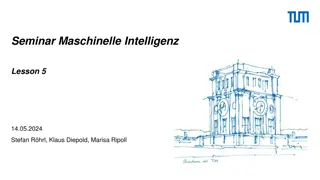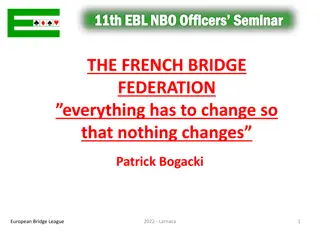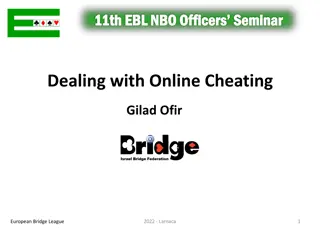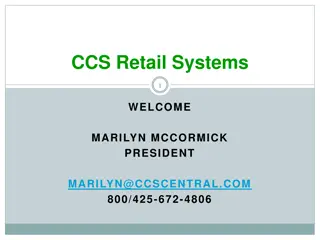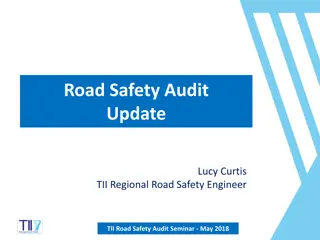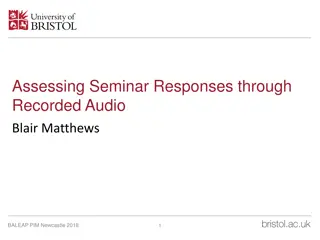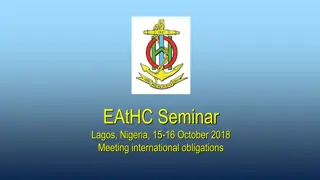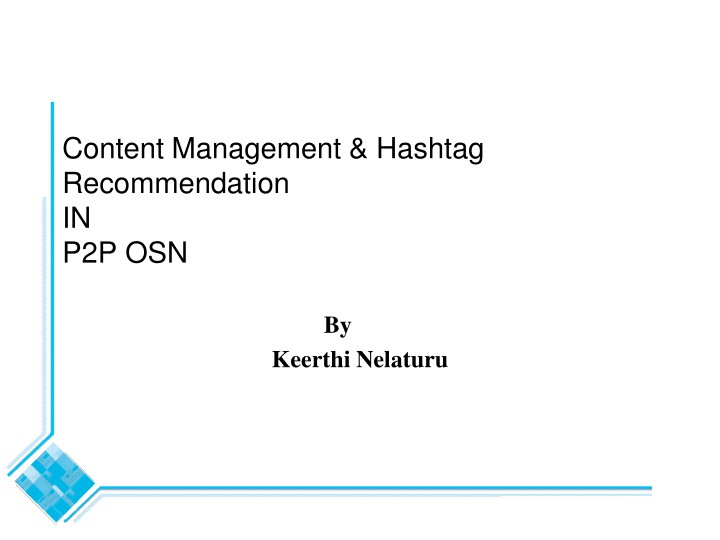
Peer-to-Peer Social Network for Content Management and Hashtag Recommendations
Explore a Peer-to-Peer (P2P) social network that addresses challenges present in current social networks, offering users greater control over their data and content. This innovative platform utilizes P2P architecture, Java Desktop Application, PostgreSQL, and Amazon EC2 Cloud to provide a decentralized and user-centric experience. Discover how content organization, access control, and hashtag recommendations play key roles in enhancing user interaction and privacy within this P2P social network.
Download Presentation

Please find below an Image/Link to download the presentation.
The content on the website is provided AS IS for your information and personal use only. It may not be sold, licensed, or shared on other websites without obtaining consent from the author. If you encounter any issues during the download, it is possible that the publisher has removed the file from their server.
You are allowed to download the files provided on this website for personal or commercial use, subject to the condition that they are used lawfully. All files are the property of their respective owners.
The content on the website is provided AS IS for your information and personal use only. It may not be sold, licensed, or shared on other websites without obtaining consent from the author.
E N D
Presentation Transcript
Content Management & Hashtag Recommendation IN P2P OSN By Keerthi Nelaturu
Challenges with current Social Networks Personal data left with Service Provider even when Social graph is removed Control of the User-generated content with Service Provider Targeted Advertising Data being sold to third-party companies without user s approval (Ex: Facebook beacon) Solution: Peer-to-Peer(P2P) Architecture instead of Centralized Architecture
Peer-to-Peer Social Network Utilizing advantages of P2P computing in-order to avoid issues with current OSN. Client needs to install Java Desktop Application BATON overlay for the P2P Architecture (Balanced binary Tree Overlay Network) Relational Database PostgreSQL Open Source Amazon EC2 Cloud platform for Servers Client Peer Server Peer Bootstrap Peer
Content organization in our P2P Social Network Bootstrap Peer Functionalities Bootstrap Peer New user joining / leaving Auto fail-over Auto scaling Server Peer Functionalities Server Peer Schema Mapping Data loader Data Indexer Access Control
Content organization in our P2P Social Network Categories of Content Privacy Control Options Posts Comments Blogs Articles Group Discussions Attachments Public Self Friends Only
About Hashtag Introduced by Twitter network in August 2007 String of words or characters preceded by # symbol Used for : 1. Forming groups 2. Highlight events or disasters and any information being posted by users under one context 3. Organize personal content
Common issues with Hashtags Ambiguous tags Ex: apple may refer to fruit or mac product Heterogeneous tags Ex: Multi-lingual, acronyms, synonyms, plurals Expertise of the user adding hashtag Solution: Provide organization and relationship between hashtags Reference: HyperTwitter: Collaborative Knowledge Engineering via Twitter Messages Martin Hepp
Hashtag Syntax For getting additional information from user Consolidating multiple synonymous hashtags Letting others know about relations between tags Syntax:
Recommendation Systems Content-based Items already used by a user Collaborative Filtering based on interests from similar users Hybrid
Related Work Authors: Su Mon Kywe & Tuan-Anh Hoanget.al Personalized hashtag recommendation Select hashtags from similar users and similar tweets and rank them TF-IDF scheme used for measuring weights of content and cosine similarity for comparison
Related Work Authors: Eva Zangerle, Wolfgang Gassler & Gunther Specht Find most similar messages in a crawled data set for the tweet entered by the user Retrieving the set of hashtags used within these most similar messages Ranking the computed set of hashtag recommendation candidates TF-IDF scheme used for measuring similarity between tweets
Related Work Authors: Fre deric Godin, Viktor Slavkovikj, Wesley De Neve Topic model for recommendation LDA (Latent Dirichlet Allocation) Recommend general hashtag topics by identifying keywords Do not consider user preferences
Drawbacks with previous models TF-IDF works good for short messages Suggested tags are sparse 77% of hashtags used only once, 94% not used more than five times Mostly used when recommending a maximum of five hashtags Using topic model, keywords for hashtags are recommended
Our Recommendation System Based on probabilistic topic model LDA Both content-based and collaborative filtering methods For recommending hashtags and also content
About LDA Latent Dirichlet Allocation Hidden topic model Discover topics from large set of documents Gives topic-word distribution Gibbs Sampling algorithm w1 - wm - t1 weight weight - - weight weight tn
About LDA Latent Dirichlet Allocation Training Phase Inference Phase t1 - tm - doc1 weight weight - - docn weight weight
Offline Sampling Inference Training Collection of Training Dataset Content From Network Final Doc- Topic Distribution JGibbLDA JGibbLDA JGibbLDA : http://jgibblda.sourceforge.net/
Content Types Content from Similar Users Location based Content from Friends Overall Popularity LDA User- generated content Keywords
Content Types User Generated Content Pass on all of the user s data to LDA Identify Topics of Interest (TOI) Recommend hashtags from docs with TOI greater than threshold Content from Friends Pass on publicly available data from Friends to LDA Identify documents with similar TOI using Cosine similarity Recommend hashtags from docs with similar TOI
Data Retrieval Considerations in P2P OSN Overall Popular hashtags stored in bootstrap peer LDA models sampled for global data also in bootstrap peer Only public content is collected for options Friends and Similar Users New User will receive recommendations based on Overall Popularity and Location based
Conclusion & Future Work Simulation model for evaluation Yet to! Users to choose their own hashtag recommendation approach Include hashtag-topic distribution along with topic- word distribution Embed Ecommerce capabilities into the application




